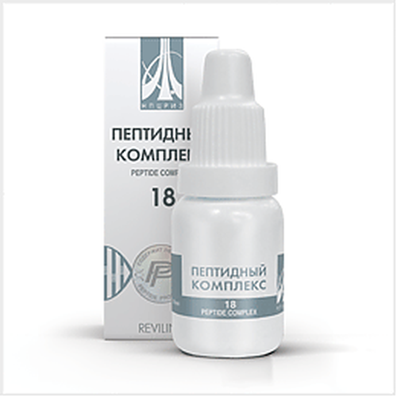Instruction for use: Brietal
I want this, give me price
Dosage form: Powder for solution for injection 100 mg
Active substance: Methohexital *
ATX
N05CA15 Methohexital
Pharmacological group:
Anesthetic means
The nosological classification (ICD-10)
Z100.0 * Anesthesiology and premedication: Abdominal surgery; Adenomectomy; Amputation; Angioplasty of the coronary arteries; Carotid artery angioplasty; Antiseptic treatment of skin in wounds; Antiseptic treatment of hands; Appendectomy; Atheroctomy; Balloon coronary angioplasty; Vaginal hysterectomy; Venous bypass; Interventions on the vagina and cervix; Interventions on the bladder; Interference in the oral cavity; Reconstructive-reconstructive operations; Hand hygiene of medical personnel; Gynecological Surgery; Gynecological interventions; Gynecological operations; Hypovolemic shock during surgery; Disinfection of purulent wounds; Disinfection of the edges of wounds; Diagnostic Interventions; Diagnostic procedures; Diathermocoagulation of the cervix; Long-term surgeries; Replacement of fistulous catheters; Infection in orthopedic surgical interventions; Artificial heart valve; Kistectomy; Short-term outpatient surgery; Short-term operations; Short-term surgical procedures; Cryotyreotomy; Blood loss during surgical interventions; Bleeding during surgery and in the postoperative period; Laser coagulation Laserocoagulation; Laser retinopathy of the retina; Laparoscopy; Laparoscopy in gynecology; Likvornaya fistula; Small gynecological operations; Small surgical interventions; Mastectomy and subsequent plastic surgery; Mediastinotomy; Microsurgical operations on the ear; Mukinging operations; Suturing; Minor surgery; Neurosurgical operation; Eclipse of the eyeball in ophthalmic surgery; Orchiectomy; Pancreatectomy; Pericardectomy; The rehabilitation period after surgical operations; Reconvalence after surgical intervention; Percutaneous transluminal coronary angioplasty; Pleural Thoracocentesis; Pneumonia postoperative and post traumatic; Preparing for surgical procedures; Preparing for a surgical operation; Preparation of the surgeon's arms before surgery; Preparation of the colon for surgical interventions; Postoperative aspiration pneumonia in neurosurgical and thoracic operations; Postoperative nausea; Postoperative hemorrhage; Postoperative granuloma; Postoperative shock; Early postoperative period; Myocardial revascularization; Resection of the apex of the tooth root; Resection of the stomach; Bowel resection; Resection of the uterus; Liver resection; Small bowel resection; Resection of a part of the stomach; Reocclusion of the operated vessel; Gluing of tissues during surgical interventions; Suture removal; Condition after eye surgery; Condition after surgery in the nasal cavity; Condition after gastrectomy; Condition after resection of the small intestine; Condition after tonsillectomy; Condition after removal of duodenum; Condition after phlebectomy; Vascular Surgery; Splenectomy; Sterilization of surgical instrument; Sterilization of surgical instruments; Sternotomy; Dental surgery; Dental intervention on periodontal tissues; Strumectomy; Tonsillectomy; Thoracic surgery; Total gastrectomy; Transdermal intravascular coronary angioplasty; Transurethral resection; Turbinectomy; Removal of a tooth; Cataract removal; Removing Cysts; Removal of tonsils; Removal of myoma; Removal of mobile milk teeth; Removal of polyps; Removal of a broken tooth; Removal of the uterus; Removal of seams; Urethrotomy; Fistula of the luminal ducts; Frontoetmoidogamotomy; Surgical infection; Surgical treatment of chronic ulcers of extremities; Surgery; Surgery in the anus; Surgery on the large intestine; Surgical practice; Surgical procedure; Surgical interventions; Surgical interventions on the digestive tract; Surgical interventions on the urinary tract; Surgical interventions on the urinary system; Surgical interventions on the genitourinary system; Surgical intervention on the heart; Surgical procedures; Surgical operations; Surgical operations on veins; Surgical intervention; Vascular Surgery; Surgical treatment of thromboses; Cholecystectomy; Partial resection of the stomach; Extraperitoneal hysterectomy; Percutaneous transluminal coronary angioplasty; Percutaneous transluminal angioplasty; Coronary artery bypass grafting; Extirpation of the tooth; Extirpation of infant teeth; Extirpation of pulp; Extracorporeal circulation; Extraction of the tooth; Extraction of teeth; Extraction of cataracts; Electrocoagulation; Endourological interventions; Episiotomy; Ethmoidotomy; Complications after tooth extraction
Composition and release form
1 bottle with powder for the preparation of the injection solution contains methohexital sodium 500 mg.
Pharmachologic effect
Pharmacological action is anesthesia, sleeping pills.
Clinical Pharmacology
IV the introduction leads to a rapid (within 30 s) development of deep sleep, turning into anesthesia. Has an ultrashort action.
Indication for the Brietal
Introductory anesthesia; general anesthesia for short-term surgical interventions; anesthesia with prolonged surgical operations (in combination with narcotic analgesics and inhalational anesthetics); anesthesia with short-term surgical, diagnostic and therapeutic procedures, accompanied by minimal pain.
Contraindications
Hypersensitivity, severe violations of the liver and cardiovascular system, porphyria, the presence of contraindications to general anesthesia, children's age.
Application in pregnancy and lactation
Carefully.
Side effects
Thrombophlebitis, hypotension, convulsions, dyspnea, apnea, laryngospasm, bronchospasm, hiccough, twitching of skeletal muscles, headache and drowsiness in the postoperative period, anxiety, anxiety, salivation, nausea, vomiting, abdominal pain, rhinitis, allergic reactions (redness, itching , urticaria, anaphylaxis) and pain at the injection site.
Interaction
Effects intensify the depriming drugs (including ethyl alcohol and propylene glycol). It can affect the absorption and excretion of a number of substances (diphenylhydantoin, halothane, anticoagulants, corticosteroids, ethyl alcohol, propylene glycol).
Dosing and Administration
IV a jet - 1% solution, drip - 0.2% solution. For introductory anesthesia, 1% solution is injected at a rate of 1 ml / 5 s. The dose for anesthesia is 50-120 mg or more (an average of about 70 mg), which provides an anesthetic duration of 5-7 minutes. The average dose for adults is 1-1.5 mg / kg. To maintain anesthesia, one can inject 1% solution in a single dose - 20-40 mg (2-4 ml of 1% solution) every 4-7 minutes. For continuous drop infusion, 0.2% solution is administered at an average rate of about 3 ml / min (1 drop / s). The rate of administration is set individually.
Conditions for storing Brietal
At a temperature of 15-30 ° C.
Keep out of the reach of children.
Shelf life of Brietal
2 years.
Do not use after the expiry date printed on the package.

 Cart
Cart





